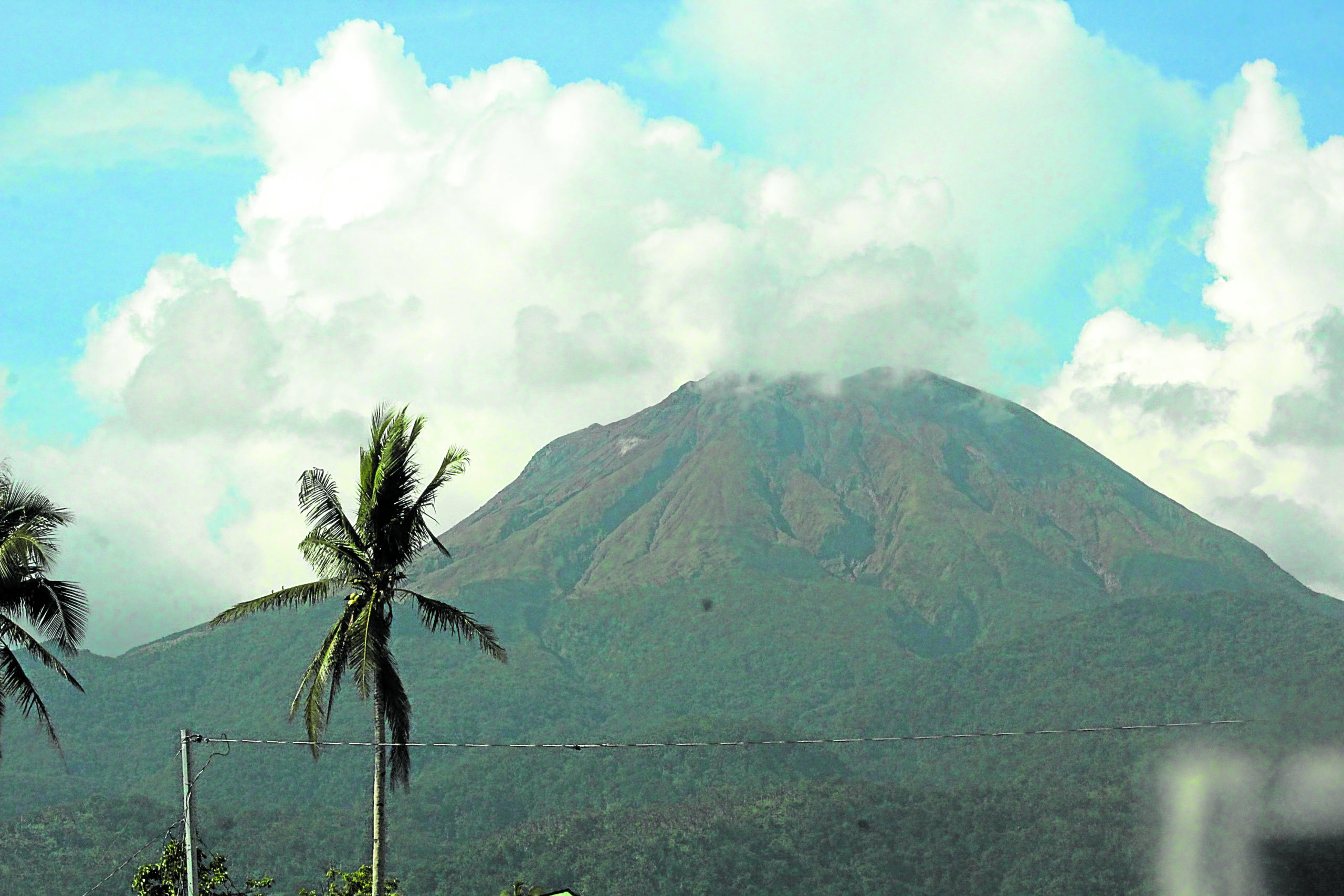
ALERT LEVEL 1 Mt. Bulusan in Sorsogon province has been showing signs of restiveness, prompting the Philippine Institute of Volcanology and Seismology to raise alert level 1 over the volcano on July 6. —Bureau of Fisheries and Aquatic Resources-Bicol
LEGAZPI CITY—The series of volcanic earthquakes that rocked Mt. Bulusan in the past two weeks could be a precursor to a “steam-laden, or phreatic eruption,” the Philippine Institute of Volcanology and Seismology (Phivolcs) in Sorsogon said on Friday.
Phivolcs seismic instruments in the past 24 hours recorded 39 volcanic quakes, causing hydrothermal pressures beneath the volcano’s edifice.
The latest reported volcanic quake brought to 228 the number of tremors recorded in Mt. Bulusan since alert level 1 was raised over the volcano on July 6.
April Dominguiano, Phivolcs resident volcanologist in Sorsogon, said the series of quakes that could possibly lead to a phreatic eruption was “normal for Bulusan under alert level 1 status.”
A phreatic eruption is a steam eruption without lava ejection caused by groundwater mixing with heated magma, a common precursor of volcanic activity.
Permanent danger zone
“Historically, eruptive events normally happened during alert level 1,” she said.
The last recorded steam eruption recorded in Mt. Bulusan was on June 5, 2017.
She explained that there are two types of volcanic tremors that normally jolt the Bulusan Volcano: A high or low frequency earthquake triggered by hydrothermal pressure developing in the volcano’s vent.
Dominguiano warned that if these quake episodes would continue to intensify, the agency could recommend the extension of the permanent danger zone (PDZ) to 6 kilometers from the current 4 km.
Phivolcs has also observed bulging at the volcano’s middle to lower slopes due to hydrothermal pressure, or magma intrusion.
Alert level 1 (abnormal) remained hoisted over Bulusan Volcano, which means the volcano continues to show signs of abnormal condition.
When asked if there are plans to raise the alert status due to the intense signs being shown by the volcano, Dominguiano said there was no scientific basis to merit such action.
On June 8, 2006, volcanologists raised the alert level to 2 (moderate level of seismic unrest) after Mt. Bulusan spewed ash.
Bulusan volcano has six crater vents surrounding the main crater.
“The public, especially mountain trekkers that enter into the 4-kilometer radius PDZ is strictly prohibited and that vigilance within the 2-kilometer extended danger zone (EDZ) on the southeastern sector must be exercised due to the increased possibilities of sudden and hazardous phreatic eruptions,” Phivolcs warned on a bulletin Friday morning.

